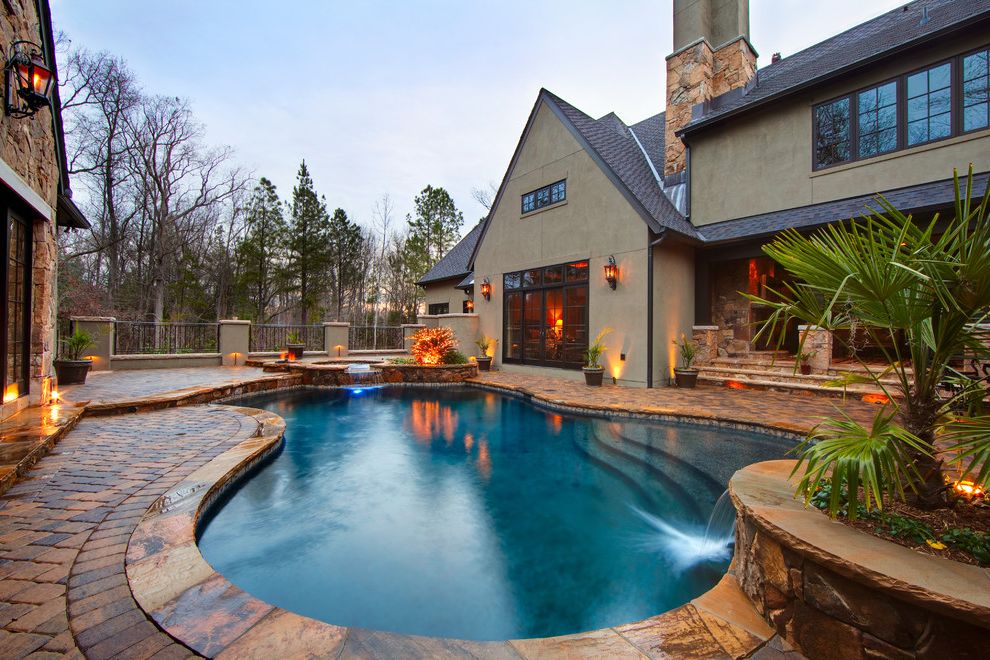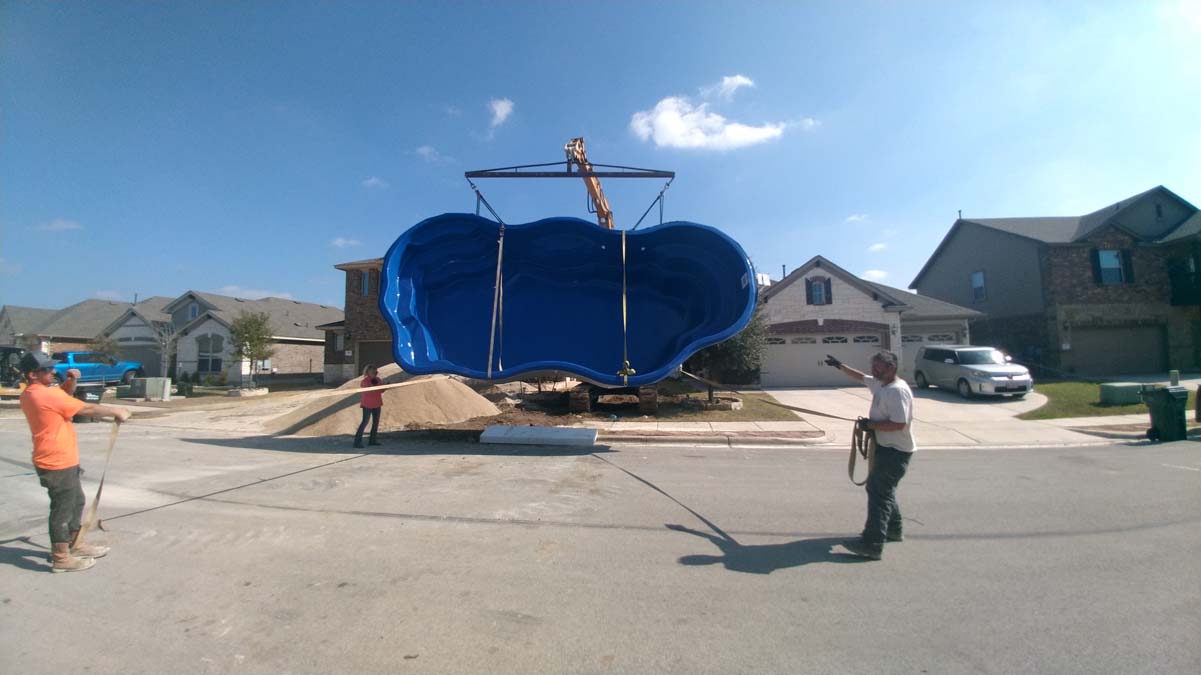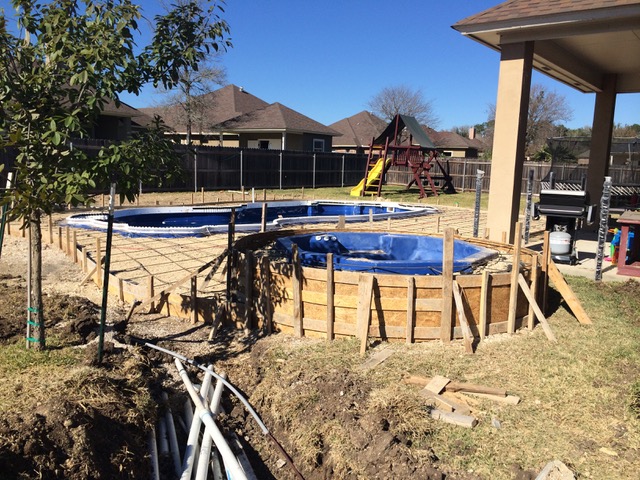Fiberglass Pools: Chlorine Systems or Salt Generation Systems
Let’s define what a salt system’s purposes are and its characteristics first.
Chlorine generators are another name for salt generation systems. Yes, chlorine is present in both salt and chlorine systems.
While chlorine systems utilize concentrated chlorine, salt generation systems divide the molecules of salt (NaCl) and water (H2O) using an electrical charge to produce hypochlorous acid (HOCl), a pure, secure, and efficient chlorine.
Which one suits you the best? Let’s look at some additional factors that may help you decide which system is ideal for you as Nachman Pools is made to work with either system.
Please keep in mind that prices listed in this article are up to date as of the date of publishing and are possible to change based on supply and demand.
First variable: System setup costs
The cost of the pool’s chlorine system is typically included in the purchase price, while a salt generator system is an extra cost.
Make this system a decent one if you’re willing to invest the extra money to install it. Don’t cut corners on this! Long-term, it is worthwhile! You should budget an additional $1,100 to $3,100 depending on the size of your pool for the Salt System.
You will need to buy your initial chemicals for either system. Depending on the size of your pool, you will need to buy chlorine for a chlorine system, whereas you would need to buy a lot of salt for a salt system. So, you should be ready to pay the expense.

Second Variable: Cost of maintenance
You will need to keep your water balanced with any system. For information on the finest chemicals for your pool, consult a local pool expert.
You should be prepared to pay $450 to $1600 a year on chlorine for a standard chlorine system.
The yearly cost of salt can range from $250 to $600. Consider adding some electricity expenditures to the comparison since the generator also consumes electricity.
The salt cells can require replacement every few years. The cost of replacing a cell today ranges from $300 to $1200, but this shouldn’t be a monthly expense.
Even when electricity and cell replacement are taken into account, salt systems are typically less expensive to maintain annually.
Variable 3: Carefulness
Depending on the weather conditions and consumption, salt systems can operate for longer periods of time (up to two weeks). Every few months, cleaning will be necessary to maintain the cells’ optimal performance.
You’ll have to shock your pool on occasion, but you should talk to your neighborhood pool professional first as they are familiar with the water quality in your area.
Chlorine systems will need to be properly inspected on a frequent basis; typically, this means once a week, but it might be more often depending on the usage and weather conditions.
In addition, you’ll need to shock the water more frequently than with saltwater and inspect filters more frequently.
Fourth Variable: Health
You can choose when to add chemicals to the water when using chlorine. Because chlorine might result in dry, itchy skin, you should do this during times of low usage. Along with causing eye irritation, it may also cause hair to change into an odd shade of color.
Use caution when storing chlorine by keeping it in its original containers and keeping it away from the pool in cool, dry, and well-ventilated areas because the fumes can be dangerous.
There are no time limits on swimming with a salt system because the generator continuously checks the levels of your water unless you like some alone time in your pool… So, that’s a matter for personal preference.
Although you’ll need a dry storage area for the salt, there aren’t many hazardous gases coming from the salt itself. Just keep in mind that a salt generator system still generates chlorine, resulting in a low chlorine level in your pool.
Will the pool water be briny with a salt system? is a question that we are asked very frequently. Human tears contain about 9 ppt of salt, the ocean’s salinity, or “salty-ness,” is between 33 and 37 ppt, and a pool typically contains 3 to 4 ppt of salt.
Clearly, the answer to this question is a big…NO!
Fifth Variable: Equipment
Pumps and filters, which are inexpensive, readily available, and simple to use, are the same basic tools needed for both systems. Determine the optimum system for your pool’s size and usage habits by speaking with a local pool expert.
If you decide to use a salt generation system, you will need to modify your pump and filter systems to non-corrosive, salt-resistant components and add a salt generator to your equipment set.
System automation is a fantastic advantage of salt. The generator automatically adds salt to the pool water, but you need still keep salt on hand to ensure that the generator is continually working.
There is no need to upgrade as chlorine systems operate with standard pump and filtration equipment. You can choose to add chemical controllers, which automate the addition of chemicals to your pool and may help you save money, time, and stress, if you want to make your life a little bit simpler.
In Conclusion:
Selecting which system to use depends on your tastes, but both are excellent for keeping pool water clean and clear.
With any method, Nachman Pools is wonderfully built to operate, but proper pool upkeep and care are still necessary.
Even though salt systems initially cost more, over time they require less maintenance.
Swimmers might feel less chemical pain in salt water since it is lighter.
Chlorine systems are typically included in the pool’s initial cost, though they could become more expensive over time.
Skin irritation in swimmers is occasionally possible and may be brought on by inadequate chemical balance or upkeep.
To find out which system is ideal for you and your busy lifestyle, speak to a local pool specialist.
For installation services in Maryland, DC, and Virginia, Nachman Pools is happy to provide fiberglass swimming pool packages and maintenance kits to contractors and homeowners since regular maintenance is required for your swimming pool. These packages include inground fiberglass pools.
When it comes to the delivery of your inground fiberglass swimming pool, our knowledgeable staff will be happy to assist you. For additional advice whenever you need it, you can contact our experienced staff at Nachman pools for help.





